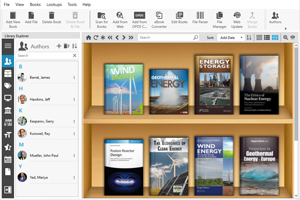8 books on Energy-efficient heating [PDF]
Updated: April 22, 2024 | 28 |
Books on Energy-Efficient Heating are essential references for startups dedicated to revolutionizing the heating industry with environmentally friendly and cost-effective solutions. These resources provide a comprehensive foundation, covering various aspects of heating system design, energy conservation, renewable heating sources, and building insulation practices. They delve into advanced techniques such as smart heating controls, heat pumps, and thermal storage, emphasizing the importance of reducing energy consumption, minimizing greenhouse gas emissions, and creating comfortable indoor environments. Moreover, these books often include practical examples, case studies, and best practices, enabling startups to navigate the complexities of energy-efficient heating projects and adapt these solutions to real-world applications.
1. District Heating and Cooling Networks
2020 by Antonio Colmenar Santos, David Borge Diez, Enrique Rosales Asensio
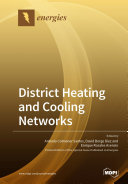
Conventional thermal power plants routinely waste substantial amounts of energy annually. However, by harnessing this discarded heat through district heating networks and employing prior energy valorization, it becomes possible to significantly reduce the need for importing fossil fuels for heating purposes. This transition brings about a range of advantages, including enhanced energy efficiency, increased energy security, and reduced greenhouse gas emissions. Given the sustained demand for heat in the medium term, district heating networks emerge as a primary avenue for cogeneration development. Their economic competitiveness, flexibility in utilizing renewable resources like geothermal or solar thermal energy, and the ability to tap into fossil fuel residual heat make them a compelling choice. Additionally, district heating networks offer the advantage of easily integrating losses into a region's energy balance, a feat unattainable in a "fully electric" scenario. As such, district heating and cooling networks, alongside cogeneration, hold the potential to play a pivotal role in ensuring future energy security and sustainability if accompanied by appropriate measures. This book aims to present an energy strategy applicable to various cities, regions, and countries by proposing a comprehensive set of measures supported by detailed case studies.
Download PDF
2. Heating, Cooling, Lighting: Sustainable Design Methods for Architects
2014 by Norbert Lechner
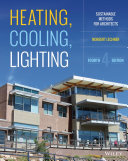
"Heating, Cooling, Lighting: Sustainable Design Methods for Architects" is the authoritative reference in the field of environmental control systems with a strong focus on sustainable design. This book outlines the various elements that contribute to the comfort within a building, guiding architects in minimizing mechanical systems and long-term energy consumption through thoughtful considerations such as site selection, architectural design, and landscaping, all aimed at maximizing natural heating, cooling, and lighting. The fourth edition features updated content on integrated design strategies and tropical design principles. The resource-rich book includes practical case studies, checklists, diagrams, and an accompanying website with supplementary cases, an image library, and resources for instructors. The emphasis is on designing buildings that harness natural energy sources like the sun and wind to reduce reliance on mechanical and electrical systems, and the book offers detailed guidance for every phase of the design process. Whether it's understanding sustainability in the context of energy sources, mastering the principles of thermal comfort, or implementing solar-responsive design, this book equips designers with the knowledge and tools needed to create environmentally friendly and comfortable architectural spaces.
Download PDF
3. An Introduction to Thermogeology: Ground Source Heating and Cooling
2012 by David Banks
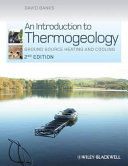
This authoritative guide serves as a foundational resource for comprehending the emerging field of ground source heating and cooling. It provides engineers, geologists, architects, planners, and regulators with essential knowledge and skills to harness the ground's substantial capacity for heat storage, supply, and exchange. With a focus on the geological aspects, the book enables readers to grasp the science behind thermogeology and offers practical guidance on various design possibilities. "An Introduction to Thermogeology: Ground Source Heating and Cooling" is designed to meet the needs of professionals whose expertise intersects with this evolving technology. They will find valuable insights into the geological aspects of ground source heating and cooling, ensuring they have a solid theoretical understanding and essential design skills. This second edition has been meticulously updated and expanded to encompass recent technical advancements, along with the addition of end-of-chapter study questions to facilitate readers' comprehension and engagement.
Download PDF
4. Passive Solar Architecture: Heating, Cooling, Ventilation, Daylighting and More Using Natural Flows
2011 by David Bainbridge, Ken Haggard
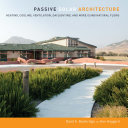
"Passive Solar Architecture: Heating, Cooling, Ventilation, Daylighting and More Using Natural Flows" presents a comprehensive guide to designing new buildings that prioritize solar orientation, natural heating and cooling, daylighting, and ventilation, all while utilizing renewable and sustainable materials, regardless of the geographical location or climate conditions. This authoritative resource, authored by two prominent figures in American solar design, provides homeowners, architects, designers, and builders with invaluable insights into effectively harnessing solar energy and optimizing climate-related resources for heating, cooling, ventilation, and illumination. Drawing on their extensive knowledge gained over more than three decades, Bainbridge and Haggard offer both overarching principles and precise formulas for crafting spaces that are not only more comfortable and healthy but also resilient, even in the absence of grid power. Furthermore, the book explores environmentally friendly building materials and their usage, delving into the historical foundations of green design that have paved the way for structures that generate surplus energy and other resources, ultimately contributing to a sustainable and harmonious living environment.
Download PDF
5. Heating, Ventilating, and Air Conditioning: Analysis and Design
2004 by Faye C. McQuiston, Jerald D. Parker, Jeffrey D. Spitler
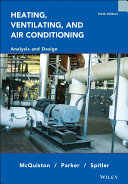
The extensively revised Sixth Edition of "Heating, Ventilating, and Air Conditioning: Analysis and Design" offers comprehensive coverage of HVAC design practices based on the latest ASHRAE standards. This edition incorporates the most up-to-date load calculation procedures, indoor air quality guidelines, and considerations regarding ozone depletion. Throughout the text, readers will find numerous practical examples illustrating the application of concepts in real-world scenarios. Furthermore, several new computer programs, in addition to those from previous editions, facilitate the comprehension of key principles and enable simulation of various situations such as psychometrics, air quality, load calculations, piping system design, duct system design, and cooling coil simulations. Notably, the cooling load chapter now presents two approaches: the heat balance method endorsed by ASHRAE and the more straightforward RTS method, both supported by computer applications for enhanced calculations. This edition also introduces new worked examples within the text and on accompanying software and features significant revisions in Chapters 6-9 for improved clarity and usability. For those seeking a thorough and authoritative treatment of HVAC, aligned with current ASHRAE standards, this edition is an invaluable resource, offering a wealth of practical scenarios for applying HVAC concepts.
Download PDF
6. Natural Home Heating: The Complete Guide to Renewable Energy Options
2003 by Greg Pahl
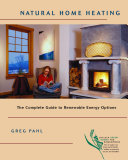
"Natural Home Heating: The Complete Guide to Renewable Energy Options" serves as a groundbreaking resource, offering a comprehensive exploration of renewable energy sources for effectively heating your home. Greg Pahl presents a well-structured and accessible overview of all available heating alternatives, encompassing traditional oil and gas furnaces, masonry heaters, wood stoves, active and passive solar systems, and heat pumps. The book equips readers with essential knowledge concerning fuels, systems, technologies, costs, and the advantages and drawbacks of each heating option. Pahl empowers homeowners to either retrofit existing heating systems with renewable replacements or design entirely new, environmentally-friendly homes that can be comfortably heated with minimal impact on both the environment and finances. With a strong emphasis on the unsustainability of the fossil fuel economy and the increasing unreliability of oil and gas supplies, this book serves as a crucial guide to exploring clean, affordable, and healthy heating alternatives, including the utilization of environmentally-conscious bio-diesel fuels, ground-source heat pumps with impressive heating efficiency, and sustainable wood-burning practices. "Natural Home Heating" stands as a one-of-a-kind resource in the realm of renewable energy options for heating, addressing an urgent need in today's world.
Download PDF
7. The Solar House: Passive Heating and Cooling
2002 by Daniel D. Chiras
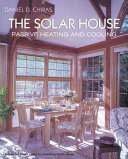
Passive solar heating and cooling, characterized by natural conditioning, offer year-round comfort while reducing or even eliminating the need for fossil fuels. However, the principles governing these techniques are often poorly understood by contemporary architects and builders. In this updated edition, Dan Chiras, renowned for "The Natural House," brings these principles into the modern era for a new generation of solar enthusiasts. While passive solar heating and cooling methods have ancient origins, societies like the Native American Anasazis and the ancient Greeks honed designs that harnessed these natural processes effectively. In the United States, the 1970s saw a resurgence of interest in passive solar architecture due to oil embargoes. With varying degrees of success, architects and builders rushed to create solar homes, often with limited knowledge and practicality. Chiras clarifies the vast potential of passive heating and cooling while addressing past mistakes. He outlines the crucial elements for successful solar design and underscores the importance of contemporary energy efficiency measures, making it easier than ever to create comfortable and affordable passive solar houses adaptable to any climate. Moreover, Chiras addresses modern construction materials and airtight methods, which occasionally lead to air quality and toxicity concerns. He introduces state-of-the-art ventilation and filtering techniques that complement traditional solar methods like thermal mass and daylighting. To assist readers, Chiras presents diagnostic aids, available in printed worksheets or software formats, empowering individuals to craft their own solar design solutions.
Download PDF
8. Elements of Induction Heating: Design, Control, and Applications
1988 by S. L. Semiatin
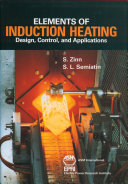
This book offers a comprehensive exploration of induction heating, elucidating its diverse applications and detailing the techniques for designing both conventional and specialized heating processes that align with the capabilities of this technology.
Download PDF
How to download PDF:
1. Install Google Books Downloader
2. Enter Book ID to the search box and press Enter
3. Click "Download Book" icon and select PDF*
* - note that for yellow books only preview pages are downloaded
1. District Heating and Cooling Networks
2020 by Antonio Colmenar Santos, David Borge Diez, Enrique Rosales Asensio

Conventional thermal power plants routinely waste substantial amounts of energy annually. However, by harnessing this discarded heat through district heating networks and employing prior energy valorization, it becomes possible to significantly reduce the need for importing fossil fuels for heating purposes. This transition brings about a range of advantages, including enhanced energy efficiency, increased energy security, and reduced greenhouse gas emissions. Given the sustained demand for heat in the medium term, district heating networks emerge as a primary avenue for cogeneration development. Their economic competitiveness, flexibility in utilizing renewable resources like geothermal or solar thermal energy, and the ability to tap into fossil fuel residual heat make them a compelling choice. Additionally, district heating networks offer the advantage of easily integrating losses into a region's energy balance, a feat unattainable in a "fully electric" scenario. As such, district heating and cooling networks, alongside cogeneration, hold the potential to play a pivotal role in ensuring future energy security and sustainability if accompanied by appropriate measures. This book aims to present an energy strategy applicable to various cities, regions, and countries by proposing a comprehensive set of measures supported by detailed case studies.
Download PDF
2. Heating, Cooling, Lighting: Sustainable Design Methods for Architects
2014 by Norbert Lechner

"Heating, Cooling, Lighting: Sustainable Design Methods for Architects" is the authoritative reference in the field of environmental control systems with a strong focus on sustainable design. This book outlines the various elements that contribute to the comfort within a building, guiding architects in minimizing mechanical systems and long-term energy consumption through thoughtful considerations such as site selection, architectural design, and landscaping, all aimed at maximizing natural heating, cooling, and lighting. The fourth edition features updated content on integrated design strategies and tropical design principles. The resource-rich book includes practical case studies, checklists, diagrams, and an accompanying website with supplementary cases, an image library, and resources for instructors. The emphasis is on designing buildings that harness natural energy sources like the sun and wind to reduce reliance on mechanical and electrical systems, and the book offers detailed guidance for every phase of the design process. Whether it's understanding sustainability in the context of energy sources, mastering the principles of thermal comfort, or implementing solar-responsive design, this book equips designers with the knowledge and tools needed to create environmentally friendly and comfortable architectural spaces.
Download PDF
3. An Introduction to Thermogeology: Ground Source Heating and Cooling
2012 by David Banks

This authoritative guide serves as a foundational resource for comprehending the emerging field of ground source heating and cooling. It provides engineers, geologists, architects, planners, and regulators with essential knowledge and skills to harness the ground's substantial capacity for heat storage, supply, and exchange. With a focus on the geological aspects, the book enables readers to grasp the science behind thermogeology and offers practical guidance on various design possibilities. "An Introduction to Thermogeology: Ground Source Heating and Cooling" is designed to meet the needs of professionals whose expertise intersects with this evolving technology. They will find valuable insights into the geological aspects of ground source heating and cooling, ensuring they have a solid theoretical understanding and essential design skills. This second edition has been meticulously updated and expanded to encompass recent technical advancements, along with the addition of end-of-chapter study questions to facilitate readers' comprehension and engagement.
Download PDF
4. Passive Solar Architecture: Heating, Cooling, Ventilation, Daylighting and More Using Natural Flows
2011 by David Bainbridge, Ken Haggard

"Passive Solar Architecture: Heating, Cooling, Ventilation, Daylighting and More Using Natural Flows" presents a comprehensive guide to designing new buildings that prioritize solar orientation, natural heating and cooling, daylighting, and ventilation, all while utilizing renewable and sustainable materials, regardless of the geographical location or climate conditions. This authoritative resource, authored by two prominent figures in American solar design, provides homeowners, architects, designers, and builders with invaluable insights into effectively harnessing solar energy and optimizing climate-related resources for heating, cooling, ventilation, and illumination. Drawing on their extensive knowledge gained over more than three decades, Bainbridge and Haggard offer both overarching principles and precise formulas for crafting spaces that are not only more comfortable and healthy but also resilient, even in the absence of grid power. Furthermore, the book explores environmentally friendly building materials and their usage, delving into the historical foundations of green design that have paved the way for structures that generate surplus energy and other resources, ultimately contributing to a sustainable and harmonious living environment.
Download PDF
5. Heating, Ventilating, and Air Conditioning: Analysis and Design
2004 by Faye C. McQuiston, Jerald D. Parker, Jeffrey D. Spitler

The extensively revised Sixth Edition of "Heating, Ventilating, and Air Conditioning: Analysis and Design" offers comprehensive coverage of HVAC design practices based on the latest ASHRAE standards. This edition incorporates the most up-to-date load calculation procedures, indoor air quality guidelines, and considerations regarding ozone depletion. Throughout the text, readers will find numerous practical examples illustrating the application of concepts in real-world scenarios. Furthermore, several new computer programs, in addition to those from previous editions, facilitate the comprehension of key principles and enable simulation of various situations such as psychometrics, air quality, load calculations, piping system design, duct system design, and cooling coil simulations. Notably, the cooling load chapter now presents two approaches: the heat balance method endorsed by ASHRAE and the more straightforward RTS method, both supported by computer applications for enhanced calculations. This edition also introduces new worked examples within the text and on accompanying software and features significant revisions in Chapters 6-9 for improved clarity and usability. For those seeking a thorough and authoritative treatment of HVAC, aligned with current ASHRAE standards, this edition is an invaluable resource, offering a wealth of practical scenarios for applying HVAC concepts.
Download PDF
6. Natural Home Heating: The Complete Guide to Renewable Energy Options
2003 by Greg Pahl

"Natural Home Heating: The Complete Guide to Renewable Energy Options" serves as a groundbreaking resource, offering a comprehensive exploration of renewable energy sources for effectively heating your home. Greg Pahl presents a well-structured and accessible overview of all available heating alternatives, encompassing traditional oil and gas furnaces, masonry heaters, wood stoves, active and passive solar systems, and heat pumps. The book equips readers with essential knowledge concerning fuels, systems, technologies, costs, and the advantages and drawbacks of each heating option. Pahl empowers homeowners to either retrofit existing heating systems with renewable replacements or design entirely new, environmentally-friendly homes that can be comfortably heated with minimal impact on both the environment and finances. With a strong emphasis on the unsustainability of the fossil fuel economy and the increasing unreliability of oil and gas supplies, this book serves as a crucial guide to exploring clean, affordable, and healthy heating alternatives, including the utilization of environmentally-conscious bio-diesel fuels, ground-source heat pumps with impressive heating efficiency, and sustainable wood-burning practices. "Natural Home Heating" stands as a one-of-a-kind resource in the realm of renewable energy options for heating, addressing an urgent need in today's world.
Download PDF
7. The Solar House: Passive Heating and Cooling
2002 by Daniel D. Chiras

Passive solar heating and cooling, characterized by natural conditioning, offer year-round comfort while reducing or even eliminating the need for fossil fuels. However, the principles governing these techniques are often poorly understood by contemporary architects and builders. In this updated edition, Dan Chiras, renowned for "The Natural House," brings these principles into the modern era for a new generation of solar enthusiasts. While passive solar heating and cooling methods have ancient origins, societies like the Native American Anasazis and the ancient Greeks honed designs that harnessed these natural processes effectively. In the United States, the 1970s saw a resurgence of interest in passive solar architecture due to oil embargoes. With varying degrees of success, architects and builders rushed to create solar homes, often with limited knowledge and practicality. Chiras clarifies the vast potential of passive heating and cooling while addressing past mistakes. He outlines the crucial elements for successful solar design and underscores the importance of contemporary energy efficiency measures, making it easier than ever to create comfortable and affordable passive solar houses adaptable to any climate. Moreover, Chiras addresses modern construction materials and airtight methods, which occasionally lead to air quality and toxicity concerns. He introduces state-of-the-art ventilation and filtering techniques that complement traditional solar methods like thermal mass and daylighting. To assist readers, Chiras presents diagnostic aids, available in printed worksheets or software formats, empowering individuals to craft their own solar design solutions.
Download PDF
8. Elements of Induction Heating: Design, Control, and Applications
1988 by S. L. Semiatin

This book offers a comprehensive exploration of induction heating, elucidating its diverse applications and detailing the techniques for designing both conventional and specialized heating processes that align with the capabilities of this technology.
Download PDF
How to download PDF:
1. Install Google Books Downloader
2. Enter Book ID to the search box and press Enter
3. Click "Download Book" icon and select PDF*
* - note that for yellow books only preview pages are downloaded

